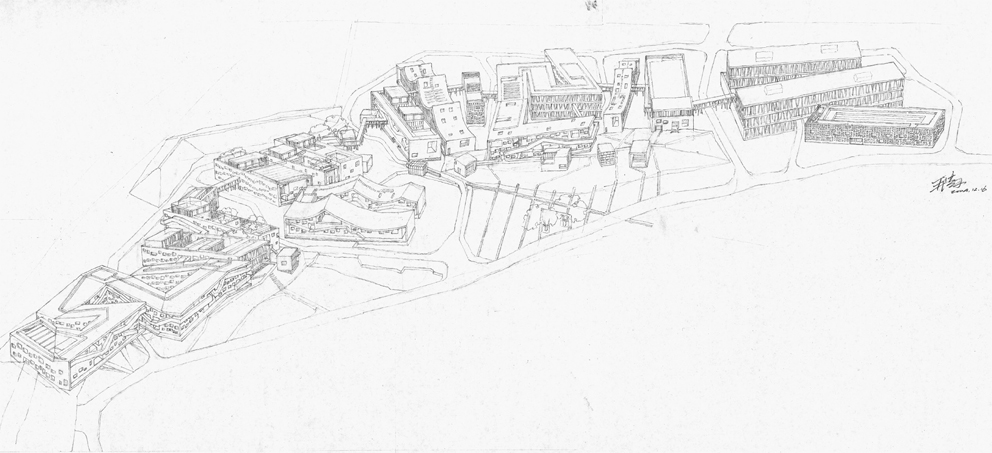
It’s something you often hear about, and the result is now and again to be viewed with amazement in exhibitions: Architects (and not just the famous ones) tend, assuming they have been graced by the muse, seized by inspiration or overwhelmed by the developer, to jot their first design on serviettes, tablecloths or notepaper. Once the ideas start bubbling up, evidently a method is needed to swiftly capture everything the effervescent mind is producing – whereby hand and pencil seem to have retained their superiority. What then follow are steps whereby something is given greater precision, delineated, elaborated on such that design morphs into plan – and today that tends to happen onscreen.
There’s another advantage to drawing by hand. While a technical drawing or plan, irrespective of whether it arose on a drawing board of using a CAD program, fixes the idea of a built volume and its position in the countryside or in relation to neighboring buildings in the abstract world of two 2D, the hand drawing always has something unfinished and provisional about it.
Anyone interested in the patience and precision that Chinese architect Wang Shu, Pritzker Prizewinner in 2012, brings to developing a shape, advancing it to create a building, trying out versions and settings along the way, should definitely take a close look at the volume on “Imagining the House”.
Wang Shu’s buildings stand out for their clear and simple forms as well as the use of traditional methods and materials. He often relies on materials for his buildings that have already been used in other edifices and thus bear history within them. Shu tends to start a design by concerning himself closely with the place where the building or buildings are to stand. He spends some time visiting the location, absorbing it. The first designs then arise in the form of vague hand-made sketches, drawn in relatively quick succession. Just as he develops everything else on the basis of hand-drawn plans, through to the sections and details.
The book in question is a great way to study this process. It reproduces Wang Shu’s drawings for six different projects life-size, along with photo spreads on the locations that convey a sense of the respective place’s unique characteristics.
In the architecture company that he runs together with his wife Lu Wenyu, or so Wang Shu confesses in the foreword, he is actually the only person to only draw with a pencil. For him, drawing means being closer to nature, he says. And practicing Chinese calligraphy, he continues, offers him a counterbalance to the fast speed at which Chinese society is developing.
And you certainly see all this in the drawings. Whether Shu is busy drawing stereometric elevations, extracting details and toying with them, pinpointing cross sections, sketching views or the sequence of buildings, their position in the vicinity, their rhythm and harmonious interaction – he always creates a close link between draft, process and hand, something you’d never get with technical drawings.
If you follow Shu developing a project from one sheet of paper to the next then you’ll definitely be astonished not only by how carefully he goes about it. You’ll also realize why you can see from a building the mindset behind creating it just as you will notice whether it was computer-generated or shaped step by step by the architect’s hand, dissected, re-assembled, and changed in the process. Long before the first concrete is cast or the first bricks laid.
The book thus does indeed provide a unique insight into the work of an architect who is still relatively unknown in Europe. And it can likewise be read as a drawn treatise on the relation of hand to building and how the two interact.
Wang Shu
Imagining the House
Lars Müller Publishers 2012
Design: Integral Lars Müller
168 pages, 68 drawings, 15 photos, softcover, stitched binding
EUR 50.00












